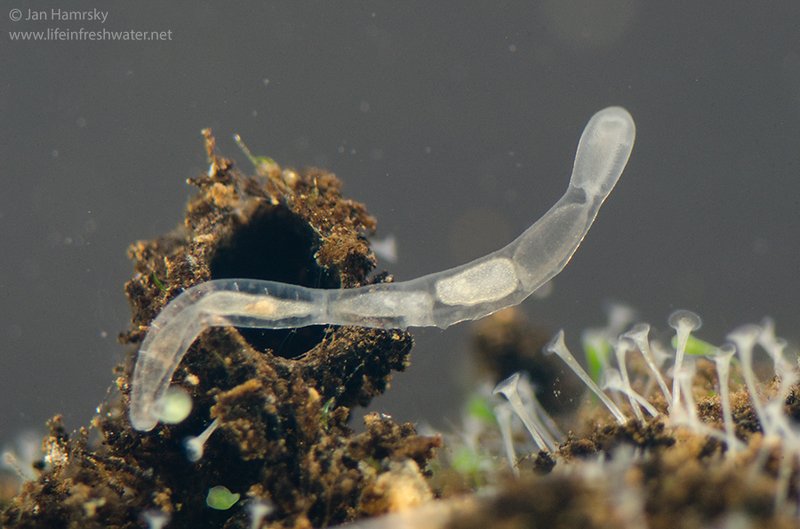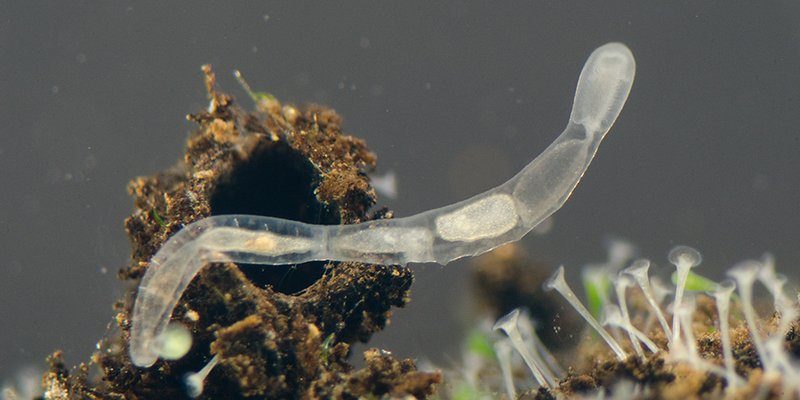
In the realm of freshwater habitats, understanding the seasonal behavior patterns of these worms is like uncovering a hidden treasure chest. Their activities tell us about the health of the ecosystem, the shifting climate, and even the impact of human activity. If you’ve ever wondered how temperature, light, or even food availability can affect these tiny creatures, you’re in the right place. Let’s dive into the world of freshwater *oligochaetes* and explore their seasonal rhythms in more detail.
What Are Freshwater Oligochaetes?
Freshwater *oligochaetes* are a type of segmented worm found in various aquatic environments, from rivers and ponds to wetlands. This group primarily includes species like *Lumbriculus* and *Tubifex*, which you may have noticed wriggling in the mud or floating in the water. Unlike their terrestrial cousins, they thrive in a watery world, where they play essential roles in nutrient cycling and sediment turnover.
These worms can breathe through their skin, which allows them to absorb oxygen directly from the water. *Oligochaetes* feed on decomposing organic matter, contributing to the breakdown of pollutants and enriching the sediment. By simply existing, they provide a crucial service to their ecosystem. Honestly, they’re like nature’s little recyclers, making sure that nutrients don’t go to waste.
Typically, these worms range in size from just a few millimeters to several centimeters long. You might be wondering what makes them so interesting—especially when it comes to their behavior throughout the seasons.
How Seasonal Changes Affect Freshwater Oligochaetes
The changing seasons bring shifts in temperature, light, and food availability that significantly impact the behavior of *oligochaetes*. These changes can lead to different patterns in their reproduction, feeding, and even their movement. You know how you might feel an extra boost of energy in the spring? For *oligochaetes*, seasonal changes act similarly, triggering instincts that help them thrive in their environment.
For example, warmer temperatures in spring and summer encourage *oligochaetes* to reproduce more actively. This is vital for maintaining their populations, especially since these worms can be prey for fish and other predators. During these months, you’ll find them closer to the surface, where they can bask in sunlight and take advantage of the increased availability of organic matter.
In contrast, during the colder months, particularly winter, you might see these worms retreat into the sediment. This behavior is akin to how some animals hibernate. By burrowing deeper into the substrate, *oligochaetes* can stay safe and conserve energy until spring returns.
Feeding Habits Throughout the Seasons
The feeding habits of *oligochaetes* change with the seasons as well. During the warmer months, these worms are often more active and will actively seek out organic debris and microorganisms. They play a pivotal role in decomposing organic material, much like a compost pile in your backyard. This process not only helps clean up the ecosystem but also enriches the sediment, making it a better home for a variety of aquatic life.
During colder months, however, the availability of food can dwindle. With less organic material breaking down and a drop in microbial activity, *oligochaetes* may slow their feeding. They can enter a sort of “energy-saving” mode, relying on their stored energy to get through the leaner times. This adaptability is part of what makes them such resilient creatures.
Here’s a quick breakdown of their seasonal feeding habits:
- Spring: Active feeding on decomposing plant material and microorganisms.
- Summer: Peaks in feeding activity due to abundant food sources.
- Autumn: Gradual decrease as temperatures drop; they prepare for winter.
- Winter: Reduced feeding; they rely on stored energy while remaining in deeper sediment.
Reproductive Patterns and Seasonal Influence
Reproduction in *oligochaetes* is heavily influenced by seasonal changes. In spring and summer, they enter a reproductive frenzy, which is crucial for maintaining population levels. The warmer temperatures signal to these worms that it’s time to reproduce, just like how flowers bloom when the sun shines bright.
During this period, *oligochaetes* can produce a large number of eggs, leading to a boom in young worms. They often lay their eggs in cocoons, which provide protection until the young worms hatch.
In contrast, during the colder months, reproductive activities significantly decrease. This is primarily due to lower temperatures, which not only reduce metabolic rates but also make it harder for the worms to find food. You could think of it as the life cycle going into “pause” mode until the right conditions return in spring.
Environmental Factors Influencing Their Behavior
Several environmental factors play a key role in shaping the seasonal behavior patterns of *oligochaetes*. Temperature is arguably the most significant. These worms thrive in temperatures between 15°C and 25°C (59°F to 77°F). When temperatures drop below this range, their activity levels plummet, and their focus shifts from feeding and reproducing to merely surviving.
Light is another crucial factor. Longer daylight hours in spring and summer not only stimulate feeding and reproduction but also trigger changes in behavior. For instance, *oligochaetes* may become more active in the early morning and late afternoon when the sun is low, as this is when the water temperature is more favorable.
Additionally, water quality plays a significant role. The presence of pollutants or changes in pH can affect how much organic material is available for these worms to feed on. A healthy ecosystem typically leads to more active *oligochaete* populations, which is why monitoring their behavior can provide insights into the broader health of freshwater environments.
Implications of Seasonal Behavior Patterns
Understanding the seasonal behavior patterns of freshwater *oligochaetes* is essential for assessing the overall health of aquatic ecosystems. These tiny worms are bioindicators; their presence and behavior can help scientists gauge the impact of pollution, climate change, and habitat destruction. If their populations decline, it’s a red flag for potential issues within the ecosystem.
For researchers and conservationists, tracking these seasonal patterns can also provide valuable insights into how to better manage and protect freshwater habitats. By understanding when *oligochaetes* are most vulnerable, strategies can be devised to minimize human impact during those times.
In practical terms, knowing how *oligochaetes* behave seasonally can help aquaculture and fishing industries. For instance, if you’re involved in fish farming, understanding when *oligochaetes* are most active can help you create a more balanced and healthy environment for your fish by ensuring ample food availability.
Freshwater *oligochaetes* may be small, but they’re mighty contributors to the health of aquatic ecosystems. Their seasonal behavior patterns reveal important truths about the environment, showing us how interconnected life is beneath the water’s surface. Understanding their rhythms not only helps us appreciate these little worms but also aids in our efforts to preserve freshwater habitats for future generations.
By keeping an eye on these fascinating creatures, we learn more about our ecosystems and the effects of climate change, pollution, and human activity. So next time you’re near a pond or river, take a moment to think about the thriving world beneath the surface. These tiny, squiggly worms are doing a lot more than you might have imagined!

